| [1] Huston LJ, Greenfield ML, Wojtys EM. Anterior cruciate ligament injuries in the female athlete. Potential risk factors. Clin Orthop Relat Res. 2000;(372):50-63.
[2] Marrale J, Morrissey MC, Haddad FS. A literature review of autograft and allograft anterior cruciate ligament reconstruction. Knee Surg Sports Traumatol Arthrosc. 2007;15(6):690-704.
[3] Mascarenhas R, MacDonald PB. Anterior cruciate ligament reconstruction: a look at prosthetics--past, present and possible future. Mcgill J Med. 2008;11(1):29-37.
[4] Marcacci M, Zaffagnini S, Iacono F, et al. Intra- and extra-articular anterior cruciate ligament reconstruction utilizing autogeneous semitendinosus and gracilis tendons: 5-year clinical results. Knee Surg Sports Traumatol Arthrosc. 2003;11(1):2-8.
[5] Mascarenhas R, MacDonald PB. Anterior cruciate ligament reconstruction: a look at prosthetics--past, present and possible future. Mcgill J Med. 2008;11(1):29-37.
[6] Heineken FG, Skalak R. Tissue engineering: a brief overview. J Biomech Eng, 1991;113(2):111-112.
[7] Lagasse E, Connors H, Al-Dhalimy M, et al. Purified hematopoietic stem cells can differentiate into hepatocytes in vivo. Nat Med. 2000;6(11):1229-1234.
[8] Henning CE, Lynch MA, Glick KR Jr. An in vivo strain gage study of elongation of the anterior cruciate ligament. Am J Sports Med. 1985;13(1):22-26.
[9] Kennedy JC, Hawkins RJ, Willis RB, et al. Tension studies of human knee ligaments. Yield point, ultimate failure, and disruption of the cruciate and tibial collateral ligaments. J Bone Joint Surg Am. 1976;58(3):350-355.
[10] 王建,敖英芳.前交叉韧带损伤的临床流行病学研究[J].中国运动医学杂志, 2001,20(4):4.
[11] Dittmer R, Harfmann P, Tenschert W, et al. Monitoring of renal transplant patients with interleukin-2 and interleukin-2 receptor enzyme immunoassay and interleukin-2 receptor immunocytology. Transplant Proc. 1990;22(5):2284-2285.
[12] Van Oers MH, Van der Heyden AA, Aarden LA. Interleukin 6 (IL-6) in serum and urine of renal transplant recipients. Clin Exp Immunol. 1988;71(2):314-319.
[13] Kishimoto T. The biology of interleukin-6. Blood. 1989;74(1): 1-10..
[14] 左新成,黄昌林,林子豪,等.不同方法处理异种肌腱的血清免疫体外实验[J].实用医药杂志,2002,19(5):363-365.
[15] van Steensel CJ, Schreuder O, van den Bosch BF, et al. Failure of anterior cruciate-ligament reconstruction using tendon xenograft. J Bone Joint Surg Am. 1987;69(6):860-864.
[16] Madden KN, Johnson KA, Howlett CR, et al. Resorbable and non-resorbable augmentation devices for tenorrhaphy of xenografts in extensor tendon deficits: 12 week study. Biomaterials. 1997;18(3):225-234.
[17] Stone KR, Walgenbach AW, Turek TJ, et al. Anterior cruciate ligament reconstruction with a porcine xenograft: a serologic, histologic, and biomechanical study in primates. Arthroscopy. 2007;23(4):411-409.
[18] Stone KR, Abdel-Motal UM, Walgenbach AW, et al. Replacement of human anterior cruciate ligaments with pig ligaments: a model for anti-non-gal antibody response in long-term xenotransplantation. Transplantation. 2007;83(2): 211-219.
[19] 李岩,陈宝田,邱长春.白细胞介素2及其受体mRNA早期诊断心脏移植免疫排斥反应[J].中华医学杂志,1996,76(7):505-508.
[20] Brevig T, Meyer M, Kristensen T, et al. Xenotransplantation for brain repair: reduction of porcine donor tissue immunogenicity by treatment with anti-Gal antibodies and complement. Transplantation. 2001;72(2):190-196.
[21] Saethre M, Baumann BC, Fung M, et al. Characterization of natural human anti-non-gal antibodies and their effect on activation of porcine gal-deficient endothelial cells. Transplantation. 2007;84(2):244-250.
[22] Key T, Schuurman HJ, Taylor CJ. Does exposure to swine leukocyte antigens after pig-to-nonhuman primate xenotransplantation provoke antibodies that cross-react with human leukocyte antigens? Xenotransplantation. 2004;11(5): 452-456.
[23] Miwa Y, Kobayashi T, Nagasaka T, et al. Are N-glycolylneuraminic acid (Hanganutziu-Deicher) antigens important in pig-to-human xenotransplantation? Xenotransplantation. 2004;11(3):247-253.
[24] Galili U, Ishida H, Tanabe K, et al. Anti-gal A/B, a novel anti-blood group antibody identified in recipients of abo-incompatible kidney allografts. Transplantation. 2002; 74(11):1574-1580.
[25] Galili U. The alpha-gal epitope and the anti-Gal antibody in xenotransplantation and in cancer immunotherapy. Immunol Cell Biol. 2005;83(6):674-686.
[26] Veillette CJ, Cunningham KD, Hart DA, et al. Localization and characterization of porcine patellar tendon xenograft antigens in a rabbit model of medial collateral ligament replacement. Transplantation. 1998;65(4):486-493.
[27] Stone KR, Walgenbach AW, Turek TJ, et al. Anterior cruciate ligament reconstruction with a porcine xenograft: a serologic, histologic, and biomechanical study in primates. Arthroscopy. 2007;23(4):411-419.
[28] Wu G, Pfeiffer S, Schröder C, et al. Co-stimulation blockade targeting CD154 and CD28/B7 modulates the induced antibody response after a pig-to-baboon cardiac xenograft. Xenotransplantation. 2005;12(3):197-208.
[29] Stone KR, Ayala G, Goldstein J, et al. Porcine cartilage transplants in the cynomolgus monkey. III. Transplantation of alpha-galactosidase-treated porcine cartilage. Transplantation. 1998;65(12):1577-1583.
[30] Zahorsky-Reeves JL, Kearns-Jonker MK, Lam TT, et al. The xenoantibody response and immunoglobulin gene expression profile of cynomolgus monkeys transplanted with hDAF-transgenic porcine hearts. Xenotransplantation. 2007; 14(2):135-144. |
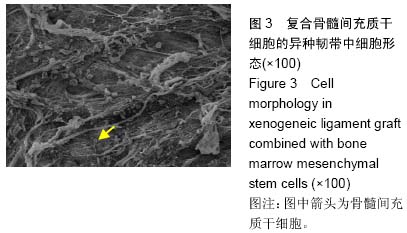
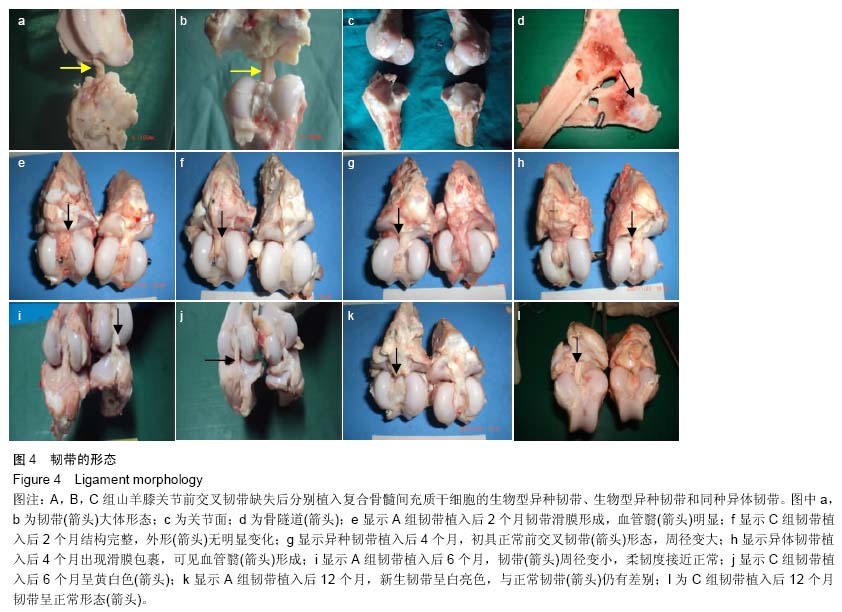
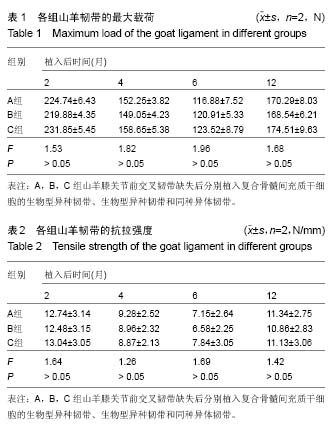
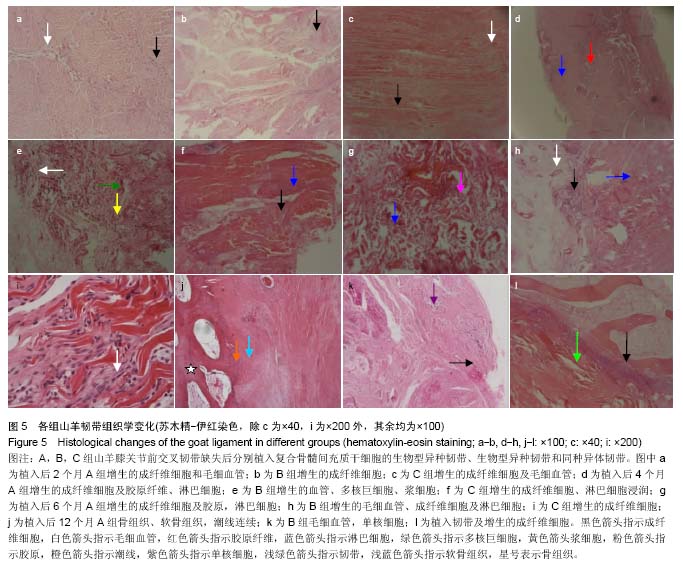
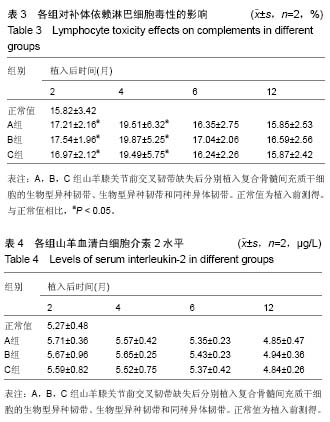
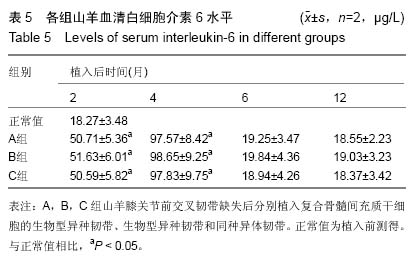
t1.jpg)
t2.jpg)